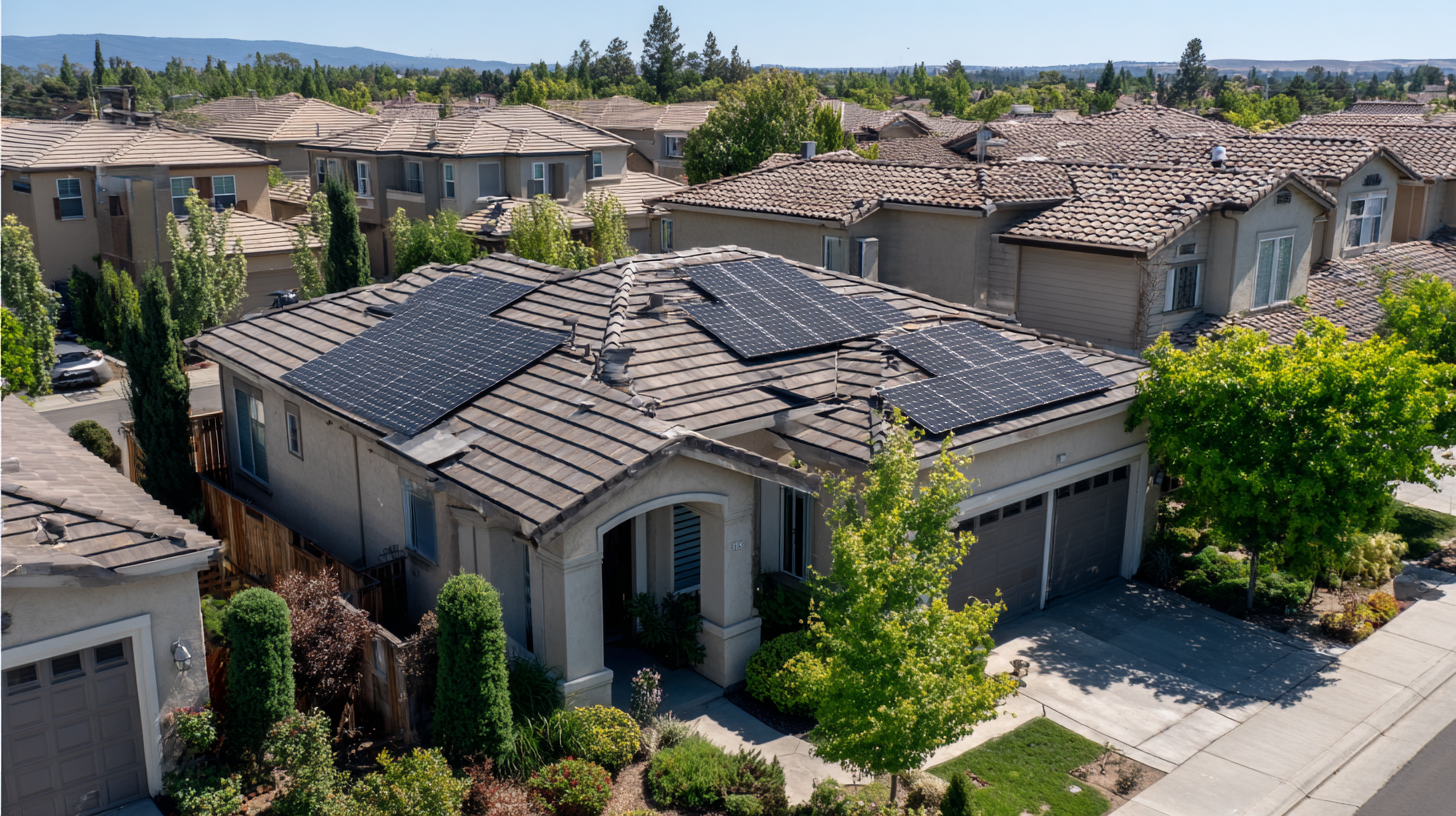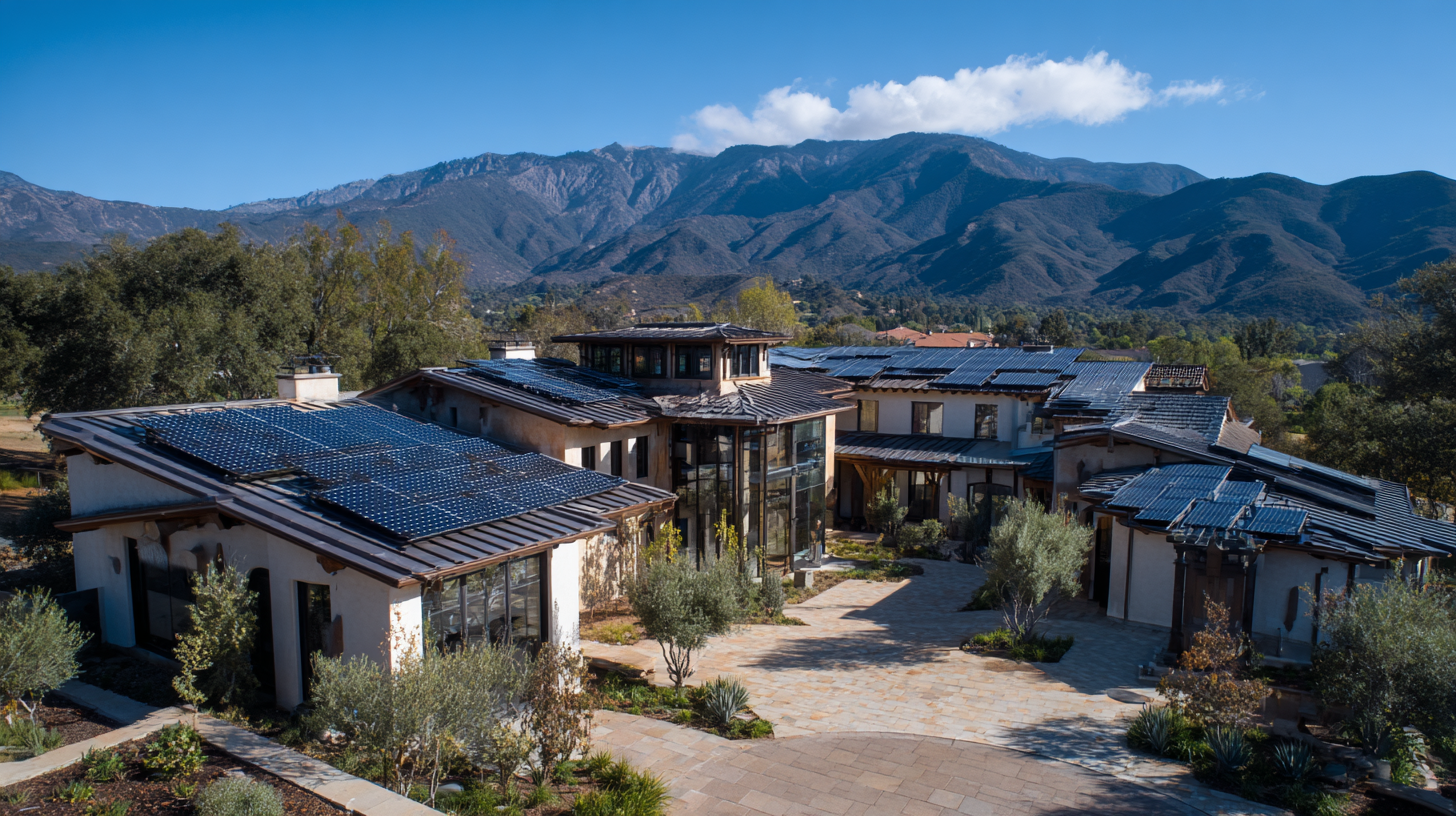MH Energy Your Better Solar and Energy Partner
Leave Your Message
MH Energy Your Better Solar and Energy Partner
In recent years, the adoption of Residential Solar Systems has surged, with reports indicating a growth of approximately 20% annually in the solar energy market. As homeowners increasingly seek sustainable energy solutions, the importance of selecting the right manufacturer becomes paramount. A comprehensive study by the Solar Energy Industries Association (SEIA) reveals that the top-rated solar panel manufacturers not only enhance energy efficiency but also provide long-term reliability and performance. With over 2.7 million residential solar installations in the United States alone, the need for a detailed comparison guide is clearer than ever. This guide aims to equip homeowners with essential insights into choosing quality manufacturers, ensuring that their investment in solar technology delivers maximum benefits and longevity.

When choosing the right solar panels for residential systems, understanding the differences between monocrystalline and polycrystalline solar panels is crucial. Monocrystalline panels, known for their high efficiency rates, typically range from 15% to 22% efficiency, according to the National Renewable Energy Laboratory (NREL). They are crafted from a single crystal structure, which allows for better performance and a longer lifespan, often exceeding 25 years. Their sleek black appearance also makes them a popular choice for homeowners looking for aesthetic appeal along with performance.
In contrast, polycrystalline panels are generally less efficient, with rates around 13% to 16%, as reported by the Solar Internationals Industry Association. These panels are made from multiple silicon crystals melted together, which can lead to lower energy conversion efficiency. However, polycrystalline panels are often more affordable and can be a cost-effective option for homeowners on a budget. While they may take up more space for the same energy output as monocrystalline, their overall lower initial investment can make them an attractive choice in certain scenarios. As the solar industry continues to evolve, both types of panels have unique advantages that cater to different needs and preferences.
Thin-film solar technologies have gained traction in the renewable energy sector due to their unique manufacturing processes and versatile applications. Unlike traditional silicon-based solar panels, thin-film systems are made by layering photovoltaic materials, such as cadmium telluride or amorphous silicon, onto substrates like glass or flexible plastics. This not only reduces the weight of the panels, making installation easier, but also allows them to perform efficiently in low-light conditions. Consequently, thin-film solar technologies are well-suited for residential installations where space and aesthetic considerations play a key role.
In addition to their lightweight and flexible characteristics, thin-film solar panels exhibit increased resilience to shading and temperature fluctuations, which makes them an attractive option for homeowners. Their ability to be integrated into building materials, like solar shingles or even windows, furthers their applicability in diverse settings. When considering the best residential solar systems, evaluating the benefits and limitations of thin-film technology is crucial, as it can provide a practical solution tailored to specific energy needs and environmental conditions. Understanding these technologies enables homeowners to make informed decisions that align with their sustainability goals.
When selecting a solar inverter for your residential solar system, efficiency and durability are paramount. The efficiency of a solar inverter determines how much of the energy captured from the sun can be converted into usable electricity. Inverters with higher efficiency ratings maximize energy production, ensuring that homeowners receive the most from their solar investments. It's crucial to compare various models, as even a slight difference in efficiency can lead to significant cost savings over time.
Durability is equally important, as solar inverters are exposed to varying weather conditions and must withstand temperature fluctuations, humidity, and even extreme weather events. When evaluating manufacturers, look for those that provide robust warranties, typically spanning 5-10 years or more, which can indicate their confidence in product longevity. Also, consider inverters with advanced cooling systems and protective features, as these components typically enhance the longevity of the unit and reduce maintenance costs. By focusing on both efficiency and durability, you can select an inverter that not only meets your energy needs but also stands the test of time.
| Feature | Inverter A | Inverter B | Inverter C |
|---|---|---|---|
| Efficiency Rating | 98.4% | 97.5% | 97.0% |
| Durability (Years) | 10 years | 12 years | 8 years |
| Warranty (Years) | 5 years | 10 years | 5 years |
| Noise Level (dB) | 40 dB | 45 dB | 50 dB |
| Weight (kg) | 18 kg | 16 kg | 20 kg |
| Cost (USD) | $1,200 | $1,500 | $1,000 |
When considering residential solar systems, energy storage solutions are a critical component. With the rise of solar panels, more homeowners are evaluating battery storage options to maximize their energy efficiency while cutting costs. According to recent data, the market for home batteries is expected to grow significantly, driven by the increasing need for backup power and the economic savings associated with storing solar energy. Studies show that effective energy storage can reduce reliance on the grid and lower monthly utility bills.

Tips for selecting the right energy storage solution include assessing your average energy consumption and determining how much backup power you need during outages. Additionally, look for systems with high efficiency ratings and robust warranties to ensure longevity and reliability. Understanding product pricing is also vital, as costs can vary widely based on capacity and technology. It's important to consider both upfront costs and long-term savings when choosing a battery system for your home.
As you plan for the future, keep in mind that advancements in solar and battery technology are leading to more integrated systems. Hybrid solar-diesel-battery setups are becoming popular, especially in areas lacking consistent grid access. These systems not only enhance energy security but also contribute to a more sustainable lifestyle, aligning with the growing demand for renewable energy solutions worldwide.
When selecting the right solar system for your home, the first step is understanding your energy needs. Assessing your typical electricity consumption will help you determine the size and capacity of the solar panel system required to meet your household demands. Additionally, consider the orientation and characteristics of your roof, as these factors can influence the efficiency and effectiveness of the solar panels. Systems that are optimally angled towards the sun will generate more energy, making it crucial to evaluate the physical aspects of your installation site.

Beyond understanding your energy needs, it's essential to choose a quality manufacturer or installer. Look for companies with a proven track record of delivering high-performance solar systems and excellent customer service. Reading reviews and seeking recommendations can provide insights into the reliability and efficiency of various brands. Also, inquire about warranties and after-sales support, as these can significantly affect the longevity and performance of your solar investment. With the right research and consideration, you can select a solar system that not only meets your energy requirements but also contributes to a sustainable future.
